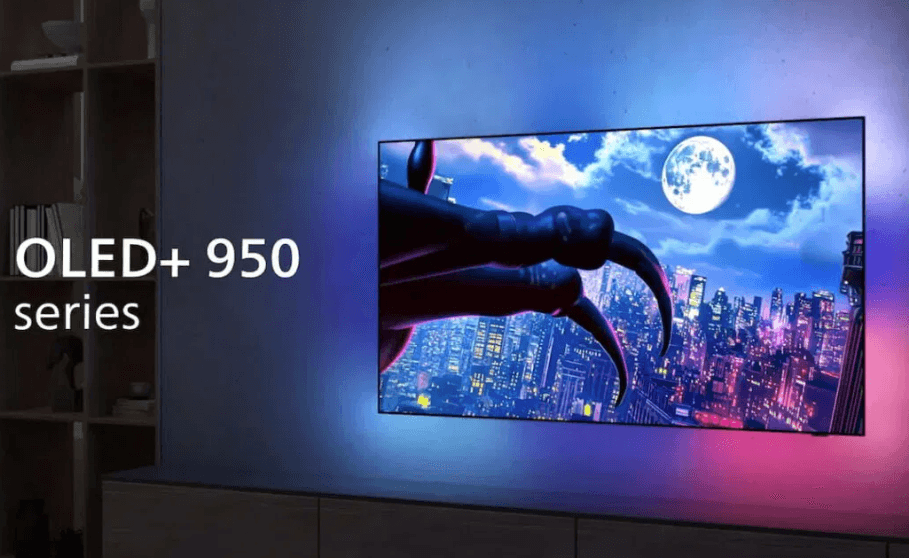
Philips’ first RGB Tandem OLED TVs have gone on sale in the U.K. and in Europe at last, giving consumers a tantalisingly affordable alternative to premium televisions from the likes of LG Electronics, Samsung Electronics and Sony.
The new Philips OLED+910 and OLED+950 televisions sit above the Philips OLED810 that launched earlier this year, and their standout feature is the all-new four-layer RGB Tandem OLED panel that’s manufactured by LG Display and promises higher brightness and a wider colour palette, improving picture accuracy by leaps and bounds.
The Philips OLED+910 (pictured above) also comes with a powerful Bowers & Wilkins sound system that’s integrated with the TV, providing a super soundstage to match those high-quality pictures, the company said. It’s available in three sizes – 55-, 65- and 77-inches, while the flagship Philips OLED+950 comes in just two sizes – 65- and 77-inches.
What’s particularly compelling about Philips’ new TVs is that they not only match the performance of rival offerings such as LG’s G5 OLED TV and Samsung’s S95F, but they’re also significantly more affordable.
Philips has opted for an extremely aggressive stance on pricing this year, with the smallest 55-inch OLED+910 priced at just £1,799, the 65-inch model retailing at £2,199 and the 77-inch version costing just £3,339. Those prices compare very well with LG’s equivalent G5 OLED model, which costs £2,399, £3,299 and £4,999 respective, for the 55-, 65- and 77-inch models.
They also undercut Samsung’s S95F, which comes with the most advanced QD-OLED panel from Samsung Display and is priced at £1,999, £2,999 and £3,399, respectively. Similarly, they’re much cheaper than Sony’s Bravia 8 II, which also has a QD-OLED panel and costs even more than Samsung’s variant.
Given these prices, consumers can expect to save quite a bit of cash if they opt for a Philips TV rather than one of the alternatives, although they should note that competing models have been on sale for a while now and are sometimes discounted at lower prices.
Still, there are reasons to like the Philips OLED+910 besides just its price tag. It’s a very capable TV, with its panel hitting up to 3,700 nits peak brightness and that 81-watt, 3.1-channel B&W soundsystem set to deliver crystal clear audio and soundtracks. There’s also Philip’s iconic four-sided Ambilight mood lighting technology to set it apart, and it sports a new processor in the shape of Philips’ 9th Gen P5 AI chip.

The curious thing about Philip’s OLED lineup this year is that the more expensive flagship model, the OLED+950 (above), doesn’t come with the same high-powered audio system, and so its sound quality is likely to be somewhat inferior to that of the OLED+910.
So why does it cost more? Well, the answer seems to be that the OLED+950 is powered by a superior “Dual Engine” 9th Gen P5 AI processor, instead of the standard one found in the OLED+910. Apart from that, the TVs are pretty similar. It remains to be seen if that more powerful chipset makes a significant difference to the picture quality to justify the higher price and lack of a B&W sound system.
The Philips OLED+950 is priced at £2,799 for the 65-inch model and £3,399 for the 77-inch version, so the larger option especially is not that much more expensive than the OLED910. Both the Philips OLED+910 and OLED+950 are powered by the Google TV operating system, unlike the company’s more affordable LCD TVs, which now run the Titan OS platform.
Later this year, Philips will launch an entry-level OLED TV called the Philips OLED760 in 48-, 55-, 65- and 77-inches. It will come with an older OLED EX panel that reaches up to 1,000 nits brightness and a less-advanced 7th-Gen P5 AI processor.